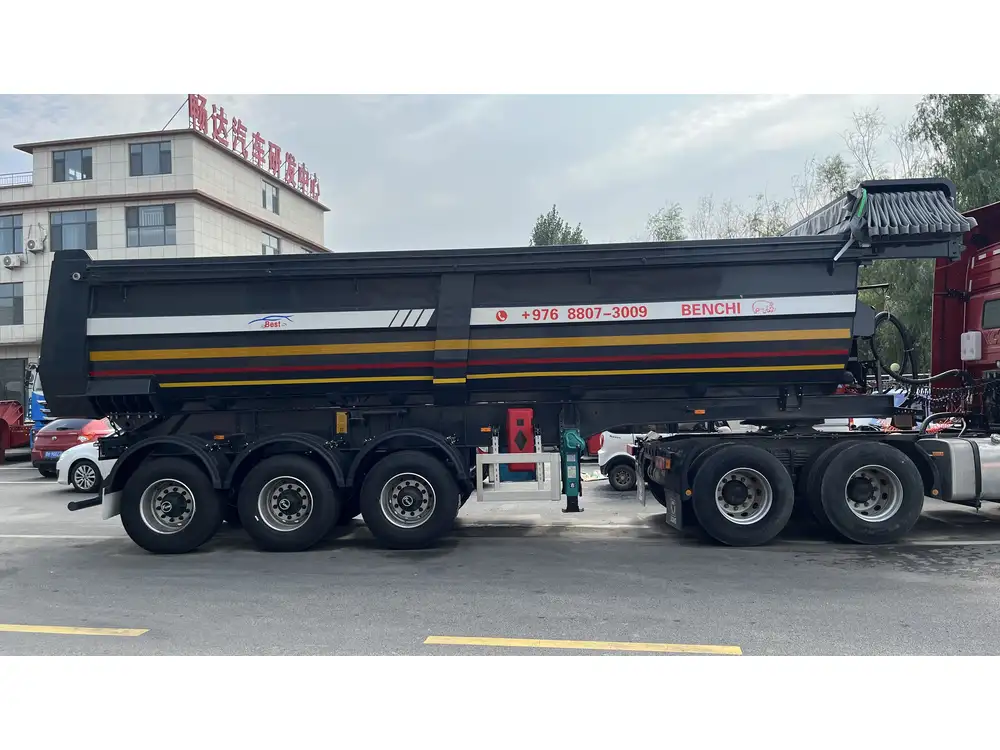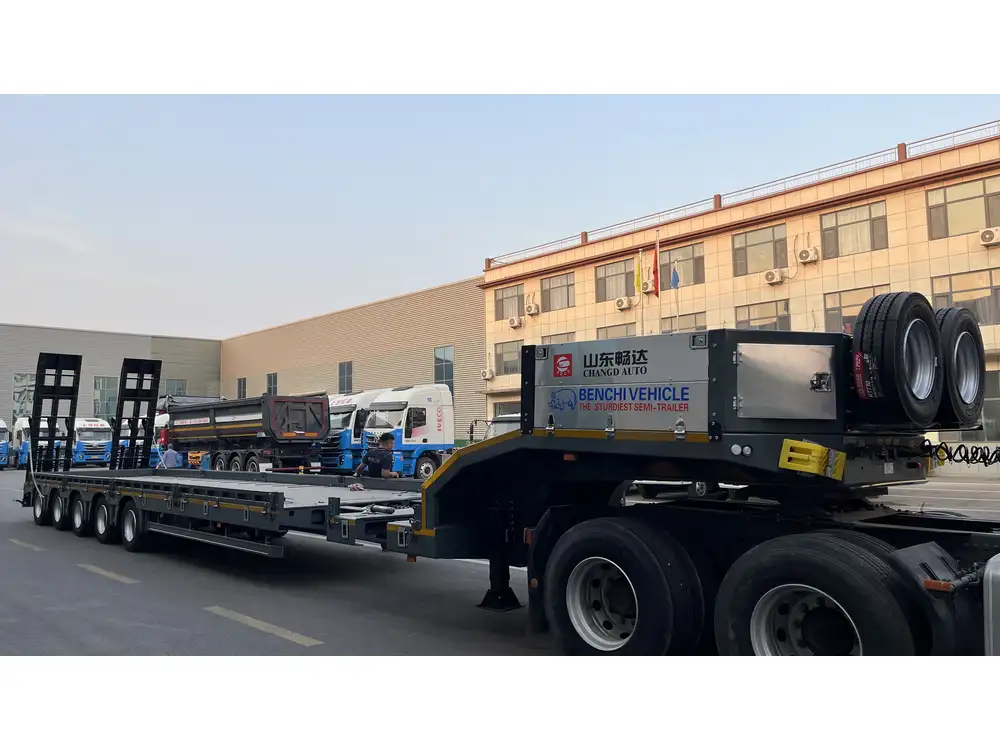In the transportation industry, understanding the fuel capacity of semi-trailers is crucial for logistics planning, operational efficiency, and cost management. This article explores the various aspects of diesel fuel capacity in semi-trailers, including average tank sizes, factors affecting capacity, and implications for fleet management.
Average Diesel Fuel Capacity of Semi-Trailers
Typical Fuel Tank Sizes
Semi-trailers vary in their fuel capacity based on the specific design and the requirements of their applications. The two most common types of fuel tanks for semi-trailers are:
| Tank Configuration | Capacity (Gallons) | Typical Usages |
|---|---|---|
| Single Tank | 100 – 150 | General freight transport |
| Dual Tanks | 200 – 300 | Long-haul transport and heavy-duty usage |
Most semi-trailers equipped with single fuel tanks typically range from 100 to 150 gallons, while those outfitted with dual tanks can hold up to 300 gallons of diesel fuel. This significant difference provides logistics managers with flexibility—enabling longer distances to be covered without frequent refueling.

Factors Influencing Fuel Capacity
Several factors can affect the fuel capacity of a semi-trailer:
Design Specifications: The layout and design of the truck determine how much fuel it can carry. Truck manufacturers often offer different configurations based on the vehicle’s intended use.
Weight Regulations: To comply with federal and state weight regulations, some manufacturers may limit fuel tank sizes to facilitate cargo loading while remaining within legal limits.
Fuel Efficiency: Trucks designed for fuel efficiency may compromise fuel tank size to reduce weight and enhance mileage per gallon, leading to lower operating costs.
Regional Considerations: Depending on the geographical area and route requirements, fleet operators may choose to equip their semi-trailers with larger tanks for long-haul routes, necessitating an understanding of regional fuel logistics.
Implications of Fuel Capacity on Fleet Management
Cost Efficiency
Fuel accounts for a substantial portion of operating expenses in the trucking industry. Understanding how many gallons a semi holds is pivotal for calculating fuel costs accurately. Fuel-efficient semi-trailers allow operators to optimize their routes effectively, ensuring greater profitability. Fleet managers can consider the following:
- Fuel Price Fluctuation: With larger tanks, operators can time their refueling when diesel prices are lower, thus reducing overall fuel expenditure.
- Route Planning: Knowing the fuel capacity allows for better route planning to ensure that low-refuel points are avoided, maximizing efficiency and minimizing delays.

Maintenance and Reliability
A well-maintained fuel system enhances the reliability of a semi-trailer. Fleet managers need to be aware of the following:
- Regular Inspections: Routine checks help identify leaks or corrosion in fuel tanks, preventing potential breakdowns on the road.
- Fuel Quality: Monitoring the quality of diesel used enhances engine performance and longevity. Contaminated fuel systems can lead to costly repairs.
Calculating Range Based on Fuel Capacity
Fuel Efficiency Metrics
Understanding the miles per gallon (MPG) achieved by a specific semi-trailer model is critical for determining operational range. For example:
| Fuel Tank Capacity (Gallons) | Average MPG | Maximum Range (Miles) |
|---|---|---|
| 100 | 6 | 600 |
| 150 | 6 | 900 |
| 200 | 6 | 1,200 |
| 300 | 6 | 1,800 |
The above table illustrates a scenario where a semi-trailer with an average fuel efficiency of 6 MPG can transport goods for significant distances before needing to refuel. It’s worth noting that the actual performance may vary based on load weight, terrain, and driving habits.

Range Enhancement Strategies
To make the most out of fuel capacity, operators can employ strategies such as:
- Load Management: Keeping truck loads optimized and within required weight limits ensures that fuel efficiency remains high.
- Driver Training: Teaching drivers about fuel-efficient driving practices can improve MPG significantly over time.
- Aerodynamics: Utilizing aerodynamic enhancements on trailers not only improves their appearance but can also enhance fuel efficiency over time.
Compliance and Regulatory Considerations
Fuel Compliance Standards
Many jurisdictions impose regulations regarding fuel storage and handling. Semi-trailer operators must understand these standards, which typically include:
- State Fuel Tank Regulations: Specific regulations govern the size and type of tanks permissible for use within a state.
- Environmental Guidelines: Ensuring compliance with environmental guidelines helps operators avoid costly fines and promotes sustainable practices.

Documentation and Compliance Checks
Proper documentation must accompany the transportation of diesel. This includes:
- Fuel Transfer Records: Keeping accurate records of fuel transfers aids in inventory management and compliance with regulations.
- Tank Inspections: Regular inspections and certifications of fuel tanks ensure operational safety and compliance.
The Future of Semi-Trailer Fuel Capacity
Advancements in Fuel Technology
As the industry moves towards more sustainable practices, the development of alternative fuels and electrification cannot be ignored. Electric trucks, powered by batteries, promise to change the dynamics of diesel usage in the long haul industry.

Potential Alternatives to Diesel Fuel
- Electric Trucks: Powered by batteries, these trucks can potentially cut down on fuel costs significantly, although they come with their own set of challenges regarding range and charging infrastructure.
- Hydrogen Fuel Cells: Offering similar ranges to diesel while producing only water vapor as a byproduct, hydrogen fuel cells represent a potential future direction for heavy transportation.
Industry Trends
As environmental regulations tighten and demand for greener solutions rises, the role of diesel fuel and its capacity in semi-trailers will continue to evolve. Fleet operators should stay abreast of technological developments that could enhance their operations.
Conclusion: Strategic Insights for Semi-Trailer Operators
In conclusion, understanding “how many gallons of diesel a semi holds” is more than just a fuel statistic; it’s a crucial aspect of strategic decision-making in the transportation industry. By considering various fuel tank sizes, operational efficiencies, and compliance regulations, fleet managers and operators can optimize their logistics efficiently.

Key Takeaways
- Fuel Capacity Matters: Proper knowledge of the capacity is essential for effective route planning and cost management.
- Maintenance is Key: Regular checks and maintaining fuel systems can prevent costly breakdowns.
- Stay Informed: Keeping an eye on regulatory changes and advancements in fuel technology is vital for future planning.
Being well-equipped with this fundamental understanding allows companies to navigate the complexities of semi-trailer operations more efficiently while positioning themselves favorably in an ever-evolving industry landscape.



